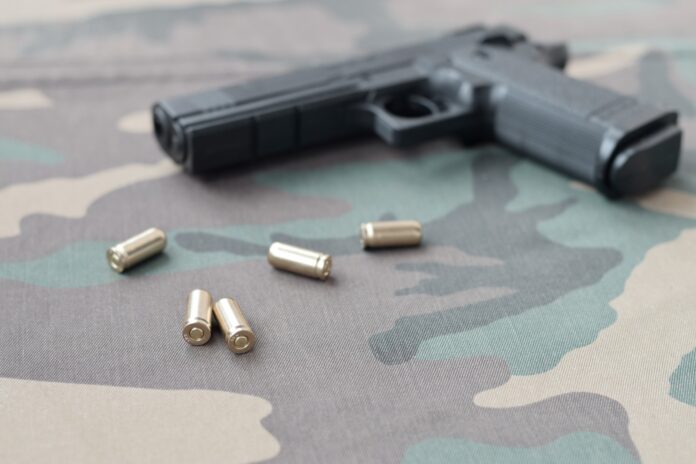Recoil is inevitable when using your gun thanks to Newton’s third law of motion that states “for every action, there is an equal and opposite reaction.” Tbh, I never thought I’d be quoting Newton’s law out of class, but we move. Simply put, recoil is the kick you feel when you discharge your gun. Recoil is a part of every gun. However, the level of impact varies in each gun. For instance, the recoil you feel from a T-Rex is more than you will get from using any of the Springfield or Ruger handguns. When using your handgun, you feel the recoil in your arms, and in your shoulder when using a rifle or shotgun. Being hit in the face, losing a tooth and falling flat on your ass are all concerns of recoil for a rookie. For veterans, they are concerned with muzzle rise, shooting faster and so on.
Why does Recoil happen?
Generally, recoil occurs for two reasons.
- Recoil is generated from the initial explosion that forces your bullet out. An average bullet can travel as fast as 1,700 mph. That’s a lot of speed and generating that amount of speed requires tremendous amount of force which comes from the explosion that happens when you pull the trigger.
- The gas from the previous explosion redirects the firearm when the bullet leaves. When you pull your trigger, the gunpowder is lit-up and turns into gas. It is the gas that continues to push the bullet until it leaves the barrel. As the bullet exits the barrel, the highly pressured gas exits the barrel too causing a sudden movement that pushes the gun up and back into you.
These are the two basic reasons why recoil occurs. However, the level of impact you feel from the recoil is influenced by several other factors such as:
- The size of your bullet and gunpowder. Large bullet causes a greater degree of recoil than smaller bullets. This is because a larger bullet will take longer time and require more gas (gun powder) to leave the barrel. Hence, more explosion.

- Your position when you pull the trigger. The way you position your body influences the impact of the recoil. You don’t want to go back home after a few hours at the range with your shoulder feeling sore like you just got out of the UFC octagon.
- The type of gun you are using. This will sure as hell affect the recoil you feel.
- The grip on your gun. Most people feel holding the handgun with one hand shows you are a pro. Even “Hobbs” holds his gun with both hands, and he is a big guy. Well, that’s a movie but still, you need to hold your gun firmly.
- Muzzle break. Most shooters don’t like muzzle breaks because it amplifies the gun’s sound. Nonetheless, If you are a rookie, it is legit advisable.
Other factors affect the recoil such as the way you mount your gun but you don’t need to tweak out about them if you are just learning the ropes.
How to deal with recoil
- You need to have a good stance. A common misconception is that leaning back prevents much impact. That couldn’t be more wrong. While leaning back, you are already putting more weight on your heels and by the time the recoil occurs, the additional pressure can make you land flat on your ass. That’s not going to be a good look for you if you are trying to impress someone with your skills. The best position is to stand with your foot slightly apart and lean a bit forward.
- You need to have a firm grip on your ammo. Hold your gun firmly with both hands especially if you are using a handgun with more recoil like the Glock 19 or the S&W 9mm shield. This grip decreases the muzzle rise so you don’t have to worry about visiting your dentist. It also allows you to pop more shots repeatedly making you ooze the “yeah, I just did that” feeling.
- The ammo, caliber and bullet you are working with all have impacts on the recoil. If you are still a budding shooter, you need to consider using a heavier gun, less gun powder and small calibration (lol, you look confused. It’s just fancy talk for guns with less velocity) or just start with easier guns like the Ruger LCR9 (9MM) or Beretta Px4 storm. These bad boys are really handy, and they give you the both hand-grip feature.
- Consider using a good muzzle break. Yes, it might seem lame because of the extra noise, but it is better than hurting yourself. Muzzle breaks reduce recoil.
- If you are working with shotguns or rifles, it is advisable to use recoil shields on the bottom end of your gun or use protective shoulder pads. Both of these protective pads are really soft and firm so you don’t feel pain.
Common myths about recoil
There are so many misconceptions about recoil. Many of these are made-up by rookies who got hurt while using a gun to discourage people from making fun of them while some others are exaggerated by shooters and film makers who don’t want kids or inexperienced persons to try handling a gun. So, they sell you all sort of baloney like “the recoil is more painful than a zebra’s kick”, “smaller guns equal less recoil”, “recoil from a gun can dislocate your shoulder” or show you how a character in a movie got thrown 4 feet backwards after pulling the trigger. While it can be agreed that these myths lead to responsible gun culture, you might want to disregard them and just pay attention to general gun safety measures because filling your head with crap before you pull the trigger will make you flinch and you may hurt yourself, someone around you or miss your target.
